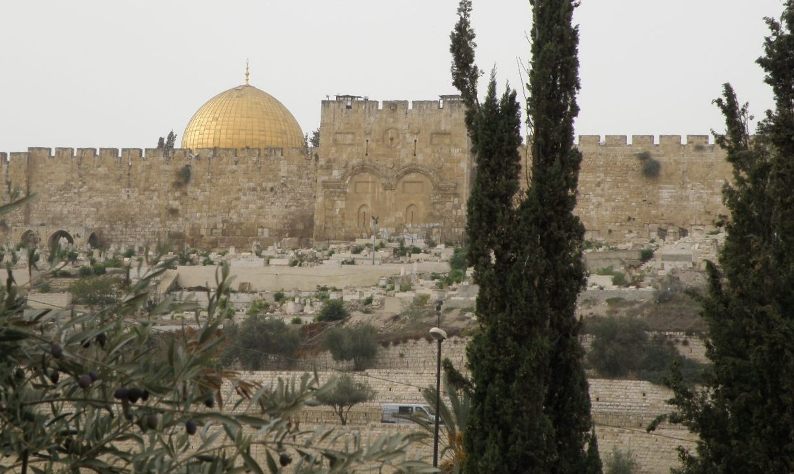
Photo by Ronald Taylor
When I refer to the Temple Mount as the traditional Temple Mount it is because it was so named by the tradition of man. There are few facts to prove that it was the location of the Temple of God. Bob Cornuke in his book Temple, has stated that the Temple of God was in the City of David. Jerusalem today is far larger than it was at the time of King Solomon and the construction of the Temple. Please understand that the City of David is the twelve acre area south of the traditional Temple Mount. I have written about the place where, according to the Bible, the Lord chose to place His name. To read, please click HERE. This is in the City of David.
I would like to focus on the geographical signature identifying the Temple Mount. First, let me point out two geologic locations in Jerusalem; the Gihon Spring and the seventy-five foot high rock precipice. These two places cannot be moved or lost, like the man-made Tomb of King David. The Gihon Spring is in the City of David. It provided “an inexhaustible supply of water” to the Temple. (Letter of Aristeas to Philocrates, Pseudepigrapha of the Old Testament, Letter of Aristeas, R. H. Charles, Volume 2, page 83, verse 89) The seventy-five foot high precipice is at the location of the traditional Temple Mount and is a few hundred yards north of the original area of the City of David.
The Jewish historian Flavius Josephus wrote that located north of the Temple of God was a fort, built by John Hyrcanus, a descendant of the Maccabees. Herod fortified this “castle” and named it the “Tower of Antonia” in honor of his friend, the Roman ruler Mark Anthony. (Antiquities of the Jews, Book XVIII, Chap. 4, paragraph 3) The Herodian stones that make up the foundation of the traditional Temple Mount prove this.
There are numerous sites of former Roman forts, with archaeological reports and photographs. All are rectangular and consist in size of from thirty to thirty-six acres. The traditional Temple Mount is thirty-six acres in size. Dr. Eli Shukron, an Israeli archaeologist, found a coin dated about 20 A.D. beneath the lowest course of the traditional Temple Mount foundation. The rebuilding of the Temple of God by Herod predates this coin by about forty years. (Antiquities of the Jews, Flavius Josephus, Book XV, Chap. 11, paragraph 1)
After the destruction of Jerusalem by the Babylonians, Nehemiah was allowed to return to the city to oversee the rebuilding of its walls. As he went around the city, when he came to the eastern walls by the Brook Kidron, his donkey was unable to continue because of the rubble that had fallen in the valley. Nehemiah inspected the eastern wall on foot. (Nehemiah 2:13-15)

Photo by Ronald Taylor
Flavius Josephus and other Jewish writers described the Temple of God as being located adjacent (within one cubit or eighteen inches) to the Brook Kidron. As you can see by the above photograph, inspecting this wall from the Kidron Valley would have been impossible. This wall is not adjacent to the Kidron Valley. This was not the wall that Nehemiah was inspecting! This is the eastern wall of the Roman fort, north of the Temple of God, and again, the Herodian stones make that very clear.
In addition, there is no water source on the traditional Temple Mount. There are cisterns, but no source of “living,” or flowing water. This disagrees with historic accounts of the Temple of God, whose water was supplied by the Gihon Spring.
A Jewish leader, Eleazar, lamented to see “the foundations of our holy temple dug up after so profane a manner.” He also stated that Jerusalem was totally destroyed except “the camp of those that hath destroyed it, which still dwells upon (over) its ruins.” The Wars Of The Jews, Book VII, Chap. 8, Para. 7. (emphasis added – the foundations of the Roman fort exist today)
Eleazar said that it was a Roman fort.
Tradition is a difficult thing to overcome. But the Lord is very patient. When the Lord deems the time to be right, He will reveal the true nature of the traditional Temple Mount and the true location of His Holy Temple. I look forward to the day. May His name be praised for His wonderful patience and grace.